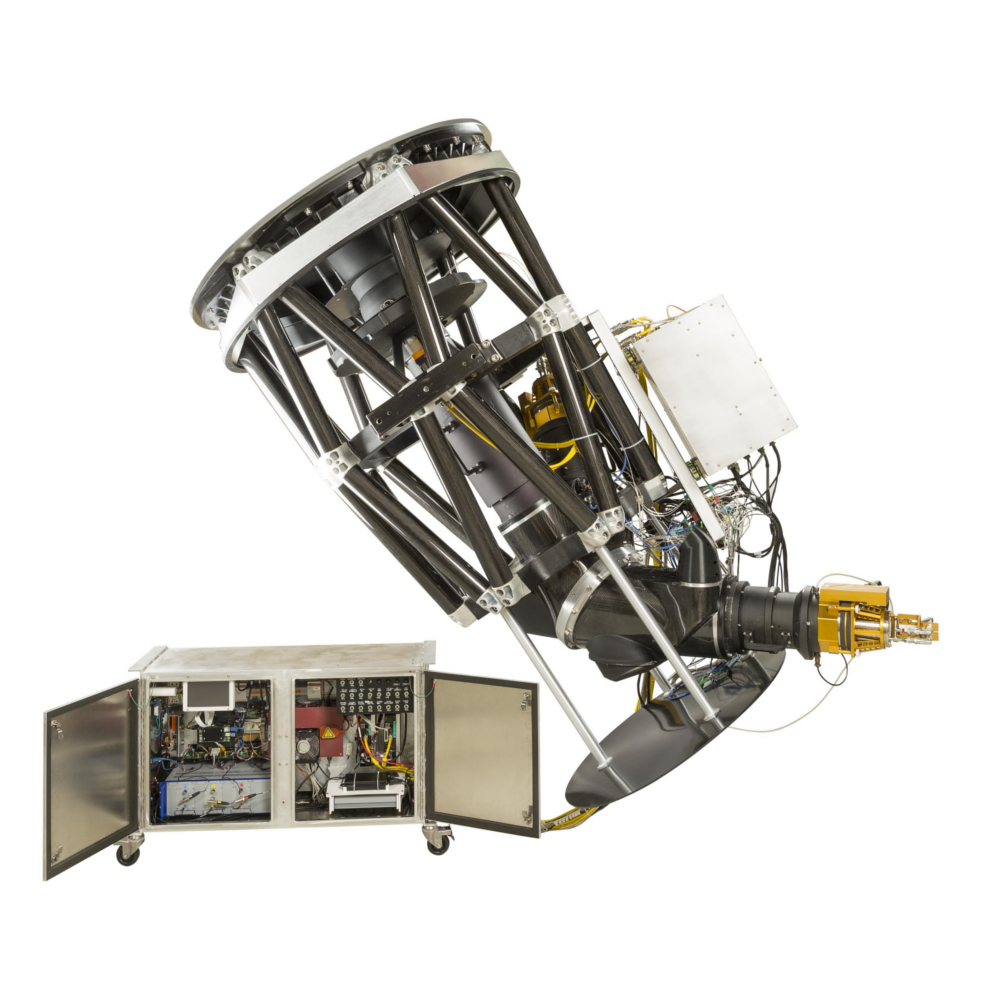SITELLE


Technical Specifications |
|
|---|---|
| Instrument Name | Spectromètre Imageur à Transformée de Fourier pour l'Étude en Long et en Large de raies d'Emission |
| Acronym | SITELLE |
| First Light | July 2015 |
| Wavelength Range | 350 to 900 nanometers (visible) |
| Instrument Type | Imaging spectrograph |
| Status | Operational at the Canada-France-Hawaii Telescope |
SITELLE (Spectromètre Imageur à Transformée de Fourier pour l’Étude en Long et en Large de raies d’Emission) is an advanced optical integral field unit (IFU) Fourier transform spectrometer (IFTS) located at the Canada-France-Hawaii Telescope (CFHT). It was first commissioned on July 7, 2015, and became available for scientific observations in the 2016A semester following successful testing during the Science Verification phase in January 2015.
SITELLE offers IFU spectroscopic capabilities in the visible spectrum (350 to 900 nm) over a wide field of view (11 by 11 arcminutes). It provides variable spectral resolutions, ranging from R=2 for low spectroscopic studies to R>104 for high-resolution applications, depending on the observer’s requirements.
This instrument is mounted at the Cassegrain focus of the 3.6-metre CFHT, covering an extensive field of view, making it one of the largest visible IFUs at the time of its commissioning. SITELLE’s focal plane consists of two cameras, each featuring four output 2048 x 2048 pixel low-noise CCD231-42 e2v chips, enabling rapid data acquisition with low noise.
SITELLE’s pixel scale, well-sampled optical seeing of 0.8 arcsec, and large field of view make it suitable for a wide range of scientific programs. During observation runs, it is typically scheduled for use around the new Moon and shares dark and grey time with the MegaCam instrument.
Observations with SITELLE are carried out through Queued Service Observing. Data are preprocessed, calibrated, and distributed to Principal Investigators via the Data Archiving & Distribution System. Raw and preprocessed data are also archived at the Canadian Astronomy Data Centre and become publicly available after a one-year proprietary period.
Funding for SITELLE came from the Canada Foundation for Innovation, with additional financial support from the CFHT, the Université Laval, ABB Analytical, and e2v. The instrument’s construction and development involved multiple entities, including ABB Analytical, the Université Laval, the Université de Montréal, and the CFHT.